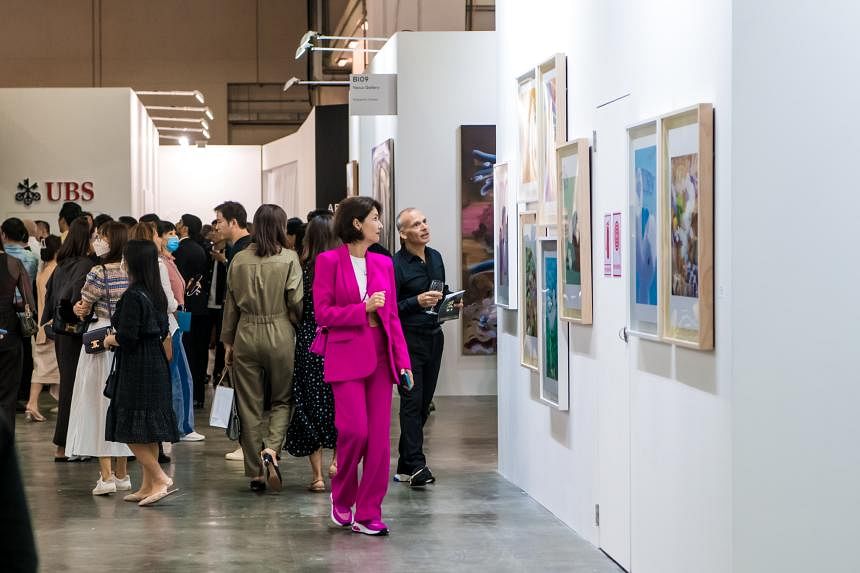SINGAPORE – A Nominated MP has suggested exempting high-value art sales from the goods and services tax (GST), to boost Singapore’s drive to become a leading arts market hub.
Speaking at the end of the Parliament sitting on Nov 22, arts NMP Usha Chandradas noted that Singapore witnessed double-digit growth in art sales in 2022.
She pointed out that Hong Kong, long a leading art auction hub in the region, does not charge GST or other value-added taxes.
“The result is that it is often more cost-effective for art dealers to transact higher-value sales through Hong Kong than in Singapore where local sales will attract an additional GST charge. I have been told anecdotally that this has been a longstanding issue for art gallerists in the visual art space as it makes large art deals hard to conclude in Singapore,” she said in an adjournment motion.
Mr Magnus Renfrew, co-founder of contemporary art fair Art SG which debuted in Singapore in January, told The Straits Times: “Anything that can be done to reduce the tax on art sales would be welcomed by the art community and would strengthen Singapore’s position as a key centre for the trade in art in Asia, as well as help to stimulate the local creative economy.”
Ms Chandradas noted that there are precedents for granting GST exemptions in certain industries, citing a move in 2012 to exempt GST for investment-grade gold and other precious metals to facilitate the development of gold trading.
“Tax exemptions may be harnessed as a useful tool to grow what Singapore believes to be important industries,” she added.
She also addressed other aspects of the creative economy in her speech, advocating the development of “low bono” professional services for the arts industry as well as more consistent funding for arts education in Singapore.
Drawing on her experience as a volunteer with Pro Bono SG, Ms Chandradas suggested building a pool of subsidised professional services for creatives.
“A scheme like this could help arts and cultural workers and arts businesses to be ‘match-made’ with key service providers such as lawyers, accountants, technology experts, HR professionals, marketers and others.”
She also highlighted the fund-raising challenge faced by pioneer arts school the Nanyang Academy of Fine Arts (Nafa), which is now part of the newly formed University of the Arts Singapore (UAS).
Unlike other young autonomous universities which receive substantial government funding in higher ratios beyond mere dollar-for-dollar amounts, Nafa as a private institution receives only dollar-for-dollar matching assistance under the Cultural Matching Fund (CMF).
As CMF rules have been tightened, “Nafa has not been able to benefit fully from direct donation matching under the CMF”, she said, urging the Government to ensure that the UAS receives the same fund-raising benefits.
Responding, Minister of State for Culture, Community and Youth Low Yen Ling cited various initiatives mapped out under Our SG Arts Plan (2023-2027) which are intended to further the arts scene’s development. These ranged from capability development schemes for self-employed persons in the creative industries to new infrastructural developments.
Ms Low said: “Our arts and culture landscape has come a long way. We will continue to strive and make strides to develop our arts workforce, create diversified spaces for the arts, provide funding support, and grow discerning audiences.”

